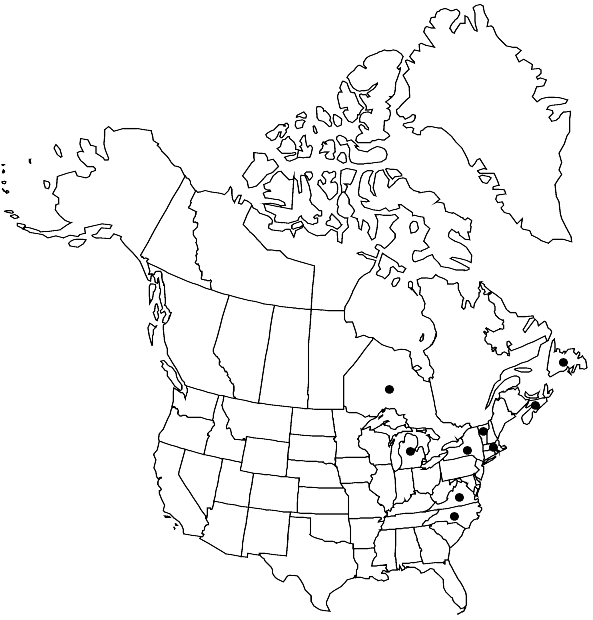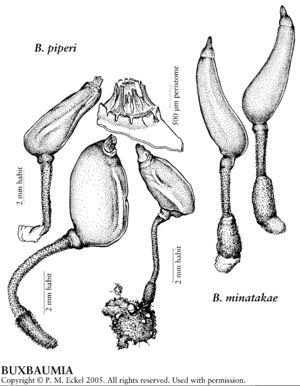Buxbaumia minakatae
Bot. Mag. (Tokyo) 25: 30, fig. 1. 1911,.
Seta 3–5 mm, straight to some-what arcuate. Capsule when mature narrowly ovoid to nearly cylindric, 3–5 mm, dull brown to rusty-brown, upper face not strongly differentiated from lower face, slightly oblique to seta or nearly erect. Spores 12–13 µm.
Phenology: Capsules mature late summer–fall.
Habitat: Soft decaying decorticated logs in deciduous to mixed forest
Elevation: low elevations (20-150 m)
Distribution

Nfld. and Labr. (Nfld.), N.S., Ont., Mass., Mich., N.Y., N.C., Vt., Va., e Asia (Russian Far East).
Discussion
Buxbaumia piperi has occasionally been confused with this species, but the sporangium shape (narrowly ovate to cylindric) and the shorter, often arcuate seta separate B. minakatae; B. piperi has a longer, straight seta and ovate sporangium. A report of B. indusiata (A. J. Grout 1928–1940, vol. 1) was based on misidentifications of eastern North American material.
Selected References
None.
